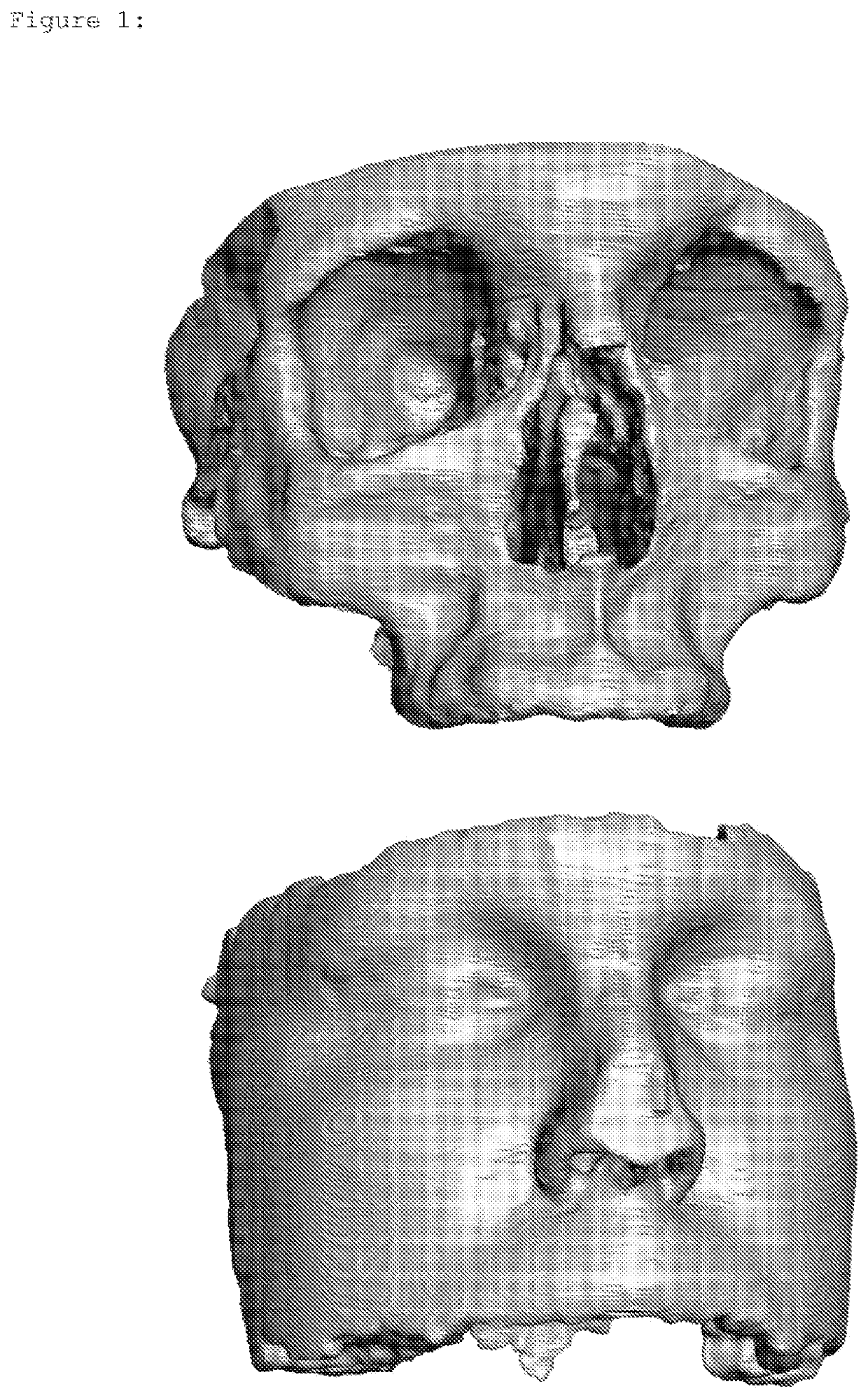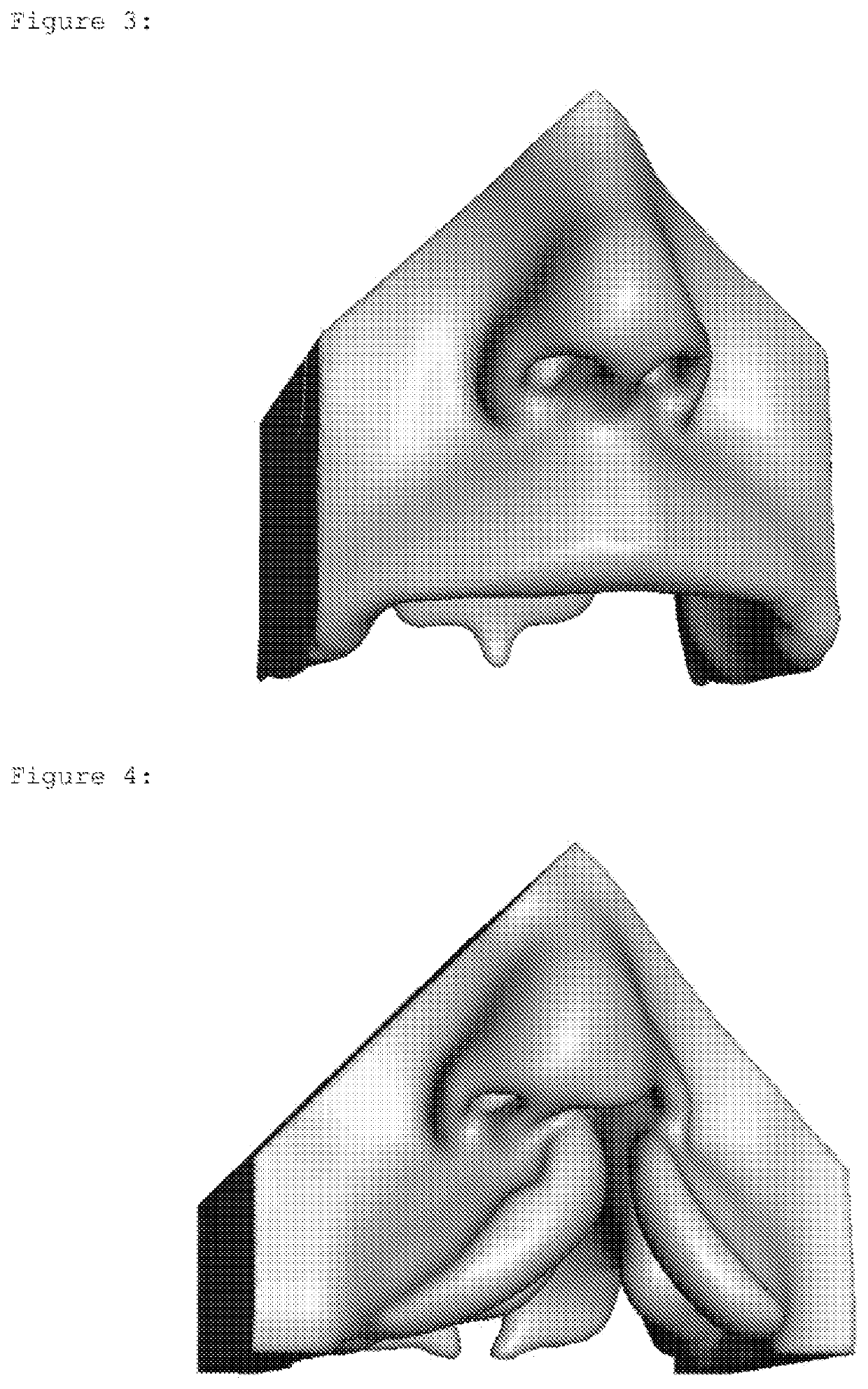Anatomical silicon models and additive manufacturing thereof
an anatomical model and additive manufacturing technology, applied in the field of additive production of anatomical models, can solve the problems of not providing a realistic reconstruction of treatment situations or surgical situations, unable to manufacture complex anatomical models, and only being able to meet the needs of educational models,
- Summary
- Abstract
- Description
- Claims
- Application Information
AI Technical Summary
Benefits of technology
Problems solved by technology
Method used
Image
Examples
examples
[0109]Small-Child Cleft Lip-and-Palate Model (CLP Model)
[0110]a. Generation of the Digital Model:
[0111]The starting point is a DICOM data set from an adult in the facial region. Of this, the upper jaw and the adjoining bone regions without the teeth are segmented, as are the surrounding soft material consisting of skin, muscles and other soft-tissue structures in a second model. The segmented models are depicted in FIG. 1.
[0112]In the next step, the networks of the segmented models are repaired, holes are filled and the surfaces are smoothed. The bone contours are adjusted to those of an infant. For the soft-tissue model, the nose, nasal septum, lip contour, labial frenulum and, if necessary, further structures are shaped. For easier processing and smoothing of the inner side of the lips and cheeks, the palate is separated in the region of the hard palate. A new palate is created via an offset from the upper jaw of the bone model and is added to the soft-tissue model via Boolean ope...
PUM
| Property | Measurement | Unit |
|---|---|---|
| Temperature | aaaaa | aaaaa |
| Viscosity | aaaaa | aaaaa |
| Viscosity | aaaaa | aaaaa |
Abstract
Description
Claims
Application Information
 Login to View More
Login to View More - R&D
- Intellectual Property
- Life Sciences
- Materials
- Tech Scout
- Unparalleled Data Quality
- Higher Quality Content
- 60% Fewer Hallucinations
Browse by: Latest US Patents, China's latest patents, Technical Efficacy Thesaurus, Application Domain, Technology Topic, Popular Technical Reports.
© 2025 PatSnap. All rights reserved.Legal|Privacy policy|Modern Slavery Act Transparency Statement|Sitemap|About US| Contact US: help@patsnap.com



